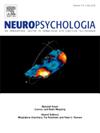Superior temporal gyrus activation modulates revenge-like aggressive response tendencies in antisocial men after provocation: Evidence from an fMRI study using a modified Taylor aggression paradigm
IF 2
3区 心理学
Q3 BEHAVIORAL SCIENCES
引用次数: 0
Abstract
Antisocial personality disorder (ASPD) is characterized by a disregard of others’ feelings, social norms, rules and obligations as well as increased reactive and proactive aggression among others. Experimental investigations of neural correlates of provocation and associated aggression often use competitive reaction time tasks played against a fictional opponent, such as the Taylor Aggression Paradigm (TAP). However, previous TAP neuroimaging research mainly focused on aggression levels in healthy and not forensic populations. This functional magnetic resonance imaging study on monetary TAP (mTAP) provocation and aggression assesses 20 violent offenders with ASPD and compares behavioral and neural responses to 17 age and education-matched healthy community participants (HC). Behaviorally, no significant group differences emerged, all participants reacted with increased punishment when faced with high vs. low provocation. On the neural level, offenders showed significantly stronger right superior temporal gyrus (STG) activation than HC during provocation. Exploratory analyses indicated that this STG activation was behaviorally relevant, as those with ASPD who expressed stronger STG activation during provocation also responded with stronger unprovoked punishment during the aggression phase. In addition, during the aggression phase, provocation was accompanied by increased left superior parietal lobe activation in ASPD compared to HC. In sum, this first mTAP fMRI study in ASPD found enhanced neural processing of provocation in ASPD which was also associated with more unprovoked aggression. The increased neural processing of provocation in ASPD and its association with subsequent higher aggression could have clinical relevance. At least, cognitive processing of perceived provocation could be a worthwhile intervention target for reducing aggressive response tendencies.
反社会男性在受到挑衅后,上颞回的激活调节了类似报复的攻击反应倾向:一项使用改良泰勒攻击范式的功能磁共振研究的证据。
反社会型人格障碍(Antisocial personality disorder,ASPD)的特征是无视他人的感受、社会规范、规则和义务,以及更多的被动和主动攻击行为。对挑衅和相关攻击行为的神经相关性的实验研究通常使用与虚构对手进行的竞争性反应时间任务,如泰勒攻击范式(TAP)。然而,以往的泰勒攻击范式神经成像研究主要集中在健康人群而非法医人群的攻击水平上。这项关于货币泰勒攻击范式(mTAP)挑衅和攻击性的首次功能磁共振成像研究评估了 20 名患有 ASPD 的暴力犯罪者,并将其行为和神经反应与 17 名年龄和教育程度相匹配的健康社区参与者(HC)进行了比较。从行为上看,没有出现明显的群体差异,所有参与者在面对高挑衅和低挑衅时的反应都是加大惩罚力度。在神经层面上,在挑衅过程中,犯罪者的右颞上回(STG)激活明显强于健康人。探索性分析表明,这种 STG 激活与行为相关,因为在挑衅过程中 STG 激活较强的 ASPD 患者在攻击阶段也会做出较强的无端惩罚反应。此外,在攻击阶段,与 HC 相比,ASPD 患者的左顶叶上部活化伴随着挑衅的增强。总之,我们发现 ASPD 对挑衅的神经处理增强,这也与更多的无端攻击行为有关。ASPD对挑衅的神经加工增强及其与随后更高的攻击性之间的关联可能具有临床意义。至少,对感知到的挑衅进行认知处理可能是减少攻击性反应倾向的一个值得干预的目标。
本文章由计算机程序翻译,如有差异,请以英文原文为准。
求助全文
约1分钟内获得全文
求助全文
来源期刊

Neuropsychologia
医学-行为科学
CiteScore
5.10
自引率
3.80%
发文量
228
审稿时长
4 months
期刊介绍:
Neuropsychologia is an international interdisciplinary journal devoted to experimental and theoretical contributions that advance understanding of human cognition and behavior from a neuroscience perspective. The journal will consider for publication studies that link brain function with cognitive processes, including attention and awareness, action and motor control, executive functions and cognitive control, memory, language, and emotion and social cognition.
 求助内容:
求助内容: 应助结果提醒方式:
应助结果提醒方式:


